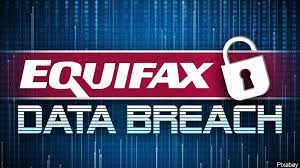15 common cybersecurity myths
As we complete the first month of the new year and cyber-crimes have gradually advanced, it is important to re-evaluate our approach towards cyber security. With digital threats rapidly evolving, it is easy to fall victim to common misconceptions that put our personal information at risk. But don't be afraid! In this informative article, we will dispel 15 cyber security myths that can leave you vulnerable to cyber-attacks. From thinking that small businesses are immune to the belief that strong passwords are foolproof, we'll uncover the truth behind these myths and arm you with the knowledge you need to keep yourself safe in 2024 and beyond. Let's start the New Year by dispelling these myths and adopting a more secure online experience. Get ready to empower yourself with the truth and start the year with confidence in your digital security!
1. Myth: Cyberattacks only happen to big companies.
Reality: While
large companies often make headlines for cyberattacks, small businesses and
individuals are also frequent targets due to the misconception that they may
have weaker security measures. Cybercriminals exploit vulnerabilities
indiscriminately, targeting entities of all sizes for financial gain or data
theft.
Scenario: In the WannaCry ransomware attack, which
began in May 2017, cybercriminals exploited a vulnerability in outdated
versions of Microsoft Windows. The attack affected organizations worldwide,
including small businesses, hospitals, and individuals who failed to update their
systems.
Reference: WannaCry ransomware attack
2. Myth: Antivirus software is enough to protect against all threats.
Reality: Antivirus software is essential but only
provides a baseline level of protection. It primarily focuses on known malware
signatures and may not detect sophisticated or zero-day threats. Additional
security measures, such as intrusion detection systems and endpoint protection
platforms, are necessary for comprehensive defense.
Scenario: In 2019, the Emotet malware evolved to
bypass traditional antivirus detection methods. Despite users having antivirus
software installed, Emotet infections occurred globally, highlighting the
limitations of relying solely on antivirus solutions.
Reference: Emotet malware evolves
3. Myth: Using public Wi-Fi is safe as long as you don't
enter sensitive information.
Reality: Public Wi-Fi networks are often unencrypted
or poorly secured, making users vulnerable to various cyber threats.
Cybercriminals can intercept data transmitted over these networks, including
login credentials and personal information, even without users entering sensitive
data directly.
Scenario: The Dark Hotel cyber espionage campaign,
first identified in 2014, specifically targeted business travelers using hotel
Wi-Fi networks. Cybercriminals intercepted sensitive information, such as
corporate intellectual property and login credentials, through sophisticated
malware and social engineering tactics.
Reference: Dark Hotel cyber espionage
4. Myth: Strong passwords are enough to keep accounts
secure.
Reality: While strong passwords are essential, they
are not sufficient to protect against account compromise. Cybercriminals employ
various tactics, such as brute force attacks and password spraying, to
circumvent password-based authentication. Implementing multifactor
authentication (MFA) significantly enhances account security by requiring
additional verification steps.
Scenario: The Capital One data breach in 2019
compromised millions of customer records due to a misconfigured web application
firewall. The breach highlighted the importance of multifactor authentication
as an additional layer of security to prevent unauthorized access.
Reference: Capital One data breach
5. Myth: Macs don't get viruses.
Reality: While Macs historically faced fewer malware
threats than Windows PCs, they are not immune to malicious attacks. As Mac
usage increases, cybercriminals have developed malware specifically targeting macOS
systems, exploiting vulnerabilities and leveraging social engineering tactics to
compromise user devices.
Scenario: In 2012, the Flashback malware infected
hundreds of thousands of Mac computers worldwide, demonstrating that Macs are
susceptible to malware infections. The malware exploited a Java vulnerability
to install itself silently on user devices.
Reference: Flashback malware infects Macs
6. Myth: Cybersecurity is solely the responsibility of the IT department.
Reality: Cybersecurity is a collective responsibility
that extends beyond the IT department to all employees within an organization.
While IT professionals play a crucial role in implementing and managing
security measures, employees at all levels must remain vigilant and adhere to
security best practices to mitigate risks effectively.
Scenario: The Equifax data breach in 2017, which
exposed the personal information of millions of individuals, resulted from the
company's failure to patch a known vulnerability in its systems. The breach
underscored the importance of organizational accountability and proactive risk
management in cybersecurity.
Reference: Equifaxdata breach
7. Myth: Closing unused applications or tabs on your computer makes you safer from cyberattacks.
Reality: Closing unused applications or browser tabs
reduces the attack surface available to cybercriminals but does not address
underlying security vulnerabilities. Proper cybersecurity practices, such as
applying software updates and security patches promptly, are essential for
mitigating the risk of exploitation by cyber threats.
Scenario: The Eternal Blue exploit, which targeted
unpatched Windows systems, facilitated the rapid spread of the WannaCry
ransomware in 2017. Despite users closing unused applications, systems remained
vulnerable to exploitation due to the absence of critical security updates.
Reference: Eternal Blue exploit
8. Myth: Cybercriminals only use advanced hacking techniques.
Reality: While sophisticated hacking techniques
exist, cybercriminals often exploit simple vulnerabilities and rely on social
engineering tactics to achieve their objectives. Phishing attacks, for example,
remain a prevalent method for delivering malware and stealing sensitive
information due to their effectiveness against unsuspecting targets.
Scenario: The DNC email leak in 2016, attributed to
Russian state sponsored hackers, resulted from a phishing attack targeting key
individuals within the Democratic National Committee. The attackers used social
engineering tactics to trick users into divulging login credentials, granting
unauthorized access to sensitive email communications.
Reference: DNC email leak
9. Myth: Incognito or private browsing mode keeps you anonymous and secure online.
Reality: Incognito or private browsing mode offers
limited privacy protection by preventing the browser from storing browsing
history locally. However, it does not provide complete anonymity or security,
as internet service providers, websites, and third party trackers can still
monitor users' online activities.
Scenario: Researchers discovered in 2018 that
websites could track users across sessions and even in incognito mode through
browser fingerprinting techniques. These methods effectively circumvented the
privacy protections offered by private browsing mode, compromising user
anonymity.
Reference: Tracking users in incognito mode
10. Myth: Cybersecurity is only relevant for technology related industries.
Reality: Cybersecurity is a critical concern for
organizations across all industries that handle sensitive information,
including financial data, intellectual property, and personal records. Any
entity that collects, processes, or stores such data faces cyber threats and
must implement appropriate security measures to safeguard against potential
breaches.
Scenario: The Target data breach in 2013 compromised
the payment card information of millions of customers, impacting the retail
industry. The breach occurred due to a vulnerability in Target's network,
highlighting the significance of cybersecurity in protecting customer data and
maintaining trust in retail organizations.
Reference: Target data breach
11. Myth: You can't get hacked if you have a firewall.
Reality: Firewalls serve as a critical component of
network security by filtering incoming and outgoing traffic and blocking
potentially malicious connections. However, firewalls alone cannot guarantee
protection against all cyber threats, especially sophisticated attacks that
exploit vulnerabilities in applications or user behavior.
Scenario: The Mirai botnet DDoS attacks in 2016
targeted vulnerable Internet of Things (IoT) devices, overwhelming targeted
networks with massive volumes of traffic. Despite having firewalls in place,
many organizations struggled to mitigate the impact of these attacks due to the
widespread exploitation of unpatched vulnerabilities.
Reference: Mirai botnet DDoS attacks
12. Myth: Cybersecurity threats are always external.
Reality: Insider threats, whether intentional or
unintentional, pose significant risks to organizational cybersecurity.
Employees, contractors, or partners with access to sensitive systems or
information can compromise security through malicious actions, negligence, or
exploitation by external adversaries.
Scenario: The Edward Snowden leaks in 2013 exposed
classified government information to unauthorized individuals, leading to
significant repercussions for national security. Snowden, a former NSA
contractor, intentionally leaked classified documents to the media,
highlighting the insider threat posed by trusted insiders with privileged
access.
Reference: Snowden leaks
13. Myth: Updating software and systems can wait; it's not urgent.
Reality: Delaying software updates and security
patches increases the risk of exploitation by cyber threats, as vulnerabilities
remain unaddressed and open to exploitation. Promptly applying patches and
updates is essential to mitigate the risk of security breaches and protect
against known vulnerabilities.
Scenario: The Petya ransomware outbreak in 2017
exploited a vulnerability in Microsoft Windows systems that had not been
patched with the latest security updates. The widespread impact of the attack
underscored the critical importance of timely patch management in preventing
cybersecurity incidents.
Reference: Petya ransomware outbreak
14. Myth: Cybersecurity is too complex for individuals to understand and address.
Reality: While cybersecurity can be complex,
individuals can take proactive steps to enhance their online security and
protect themselves from cyber threats. Educating oneself about common threats,
adopting security best practices, and leveraging available resources can
empower individuals to make informed decisions and mitigate risks effectively.
Scenario: Cybersecurity awareness campaigns like
"Stop. Think. Connect." provide individuals with valuable information
and resources to enhance their cybersecurity knowledge and adopt safer online
practices. By promoting awareness and education, these initiatives empower
individuals to take control of their online security.
Reference: Stop.Think. Connect
15. Myth: Cybersecurity breaches are easy to detect and always immediately noticeable.
Reality: Some cybersecurity breaches can remain
undetected for extended periods, allowing cybercriminals to maintain
unauthorized access to systems and data. Detection challenges may arise due to
stealthy attack techniques, insufficient monitoring capabilities, or ineffective
incident response procedures.
Scenario: The Yahoo data breach, which compromised
billions of user accounts over several years, went undetected until the company
conducted a comprehensive security review. Despite the scale of the breach, Yahoo
initially failed to identify the unauthorized access, highlighting the
complexities of detecting and responding to cybersecurity incidents.
Reference: Yahoo data breach
Conclusion:
In conclusion, debunking these 15 common
cybersecurity myths is not just about dispelling misconceptions; it's about
empowering you to take control of your digital security. As we navigate the
ever-changing landscape of online threats, understanding the truth behind these
myths is crucial for safeguarding our personal information and staying one step
ahead of cybercriminals. Let's carry this knowledge forward into the new year
and beyond, implementing proactive security measures and staying vigilant
against emerging threats. By staying informed and proactive, we can all
contribute to creating a safer online environment for ourselves and future
generations. Here's to a safer and more secure digital future!














.png)
.png)















